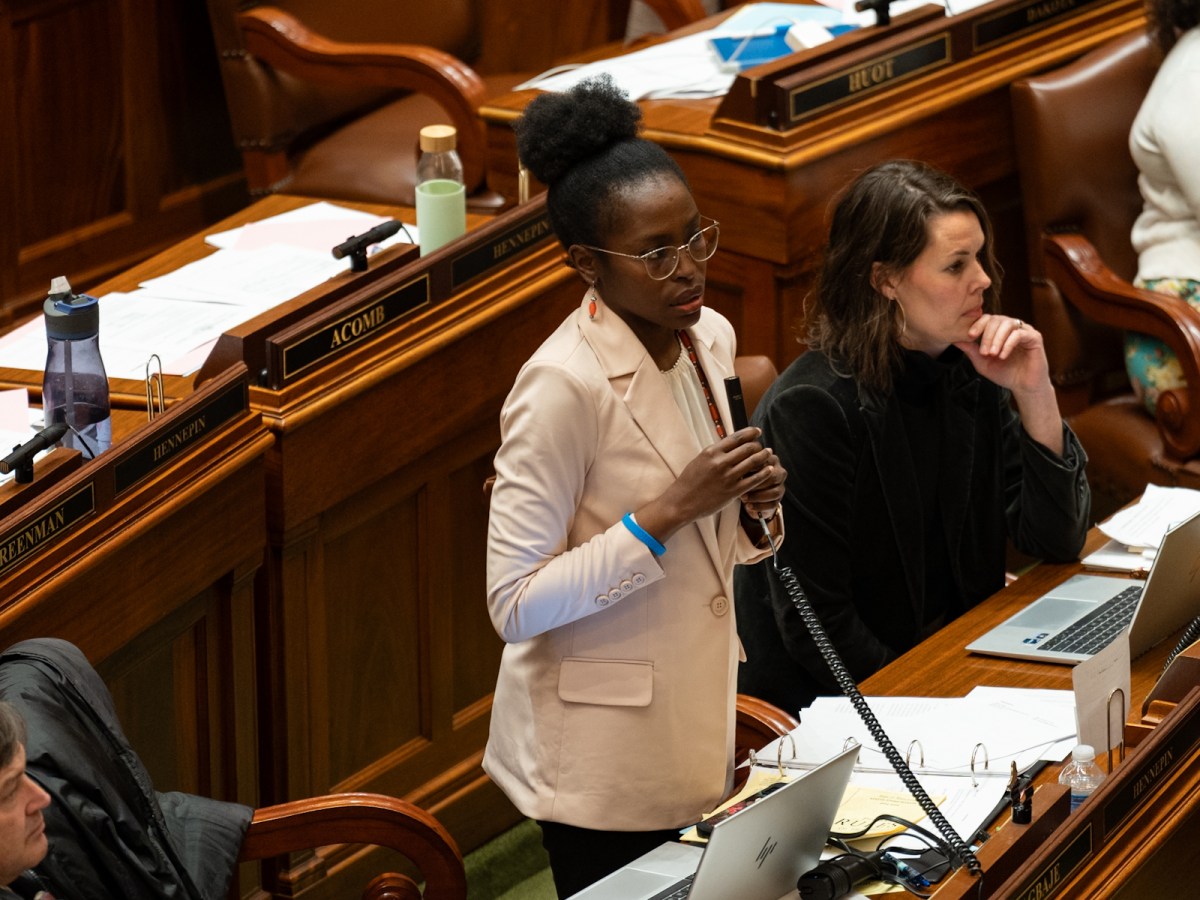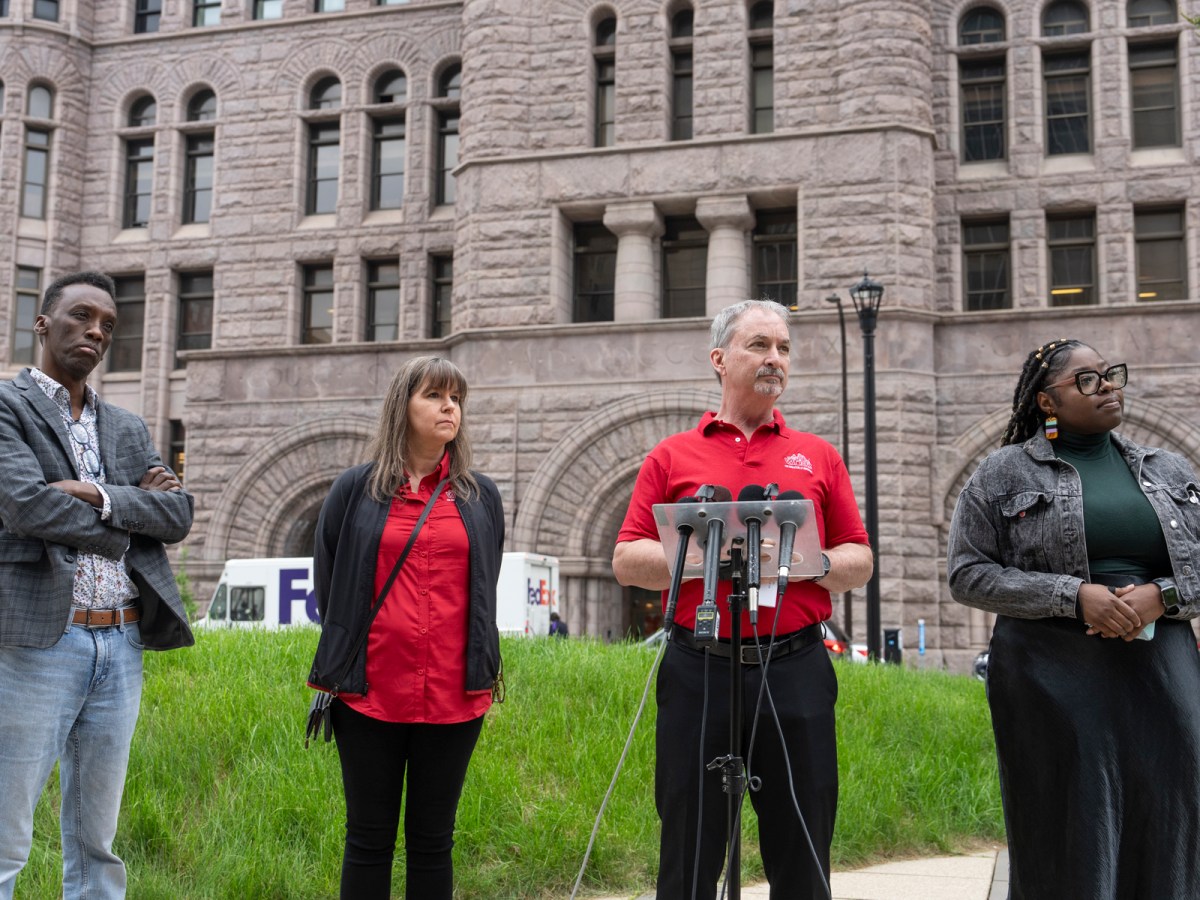A new report from the Minnesota Housing Partnership shows that nearly half of renters in the state are stretching their wallets to cover housing costs, and that the state’s racial gap in homeownership continues to persist.
The partnership, a community development nonprofit, compiles research and provides resources to advance equitable housing across the nation. The March report, “2024 State of the State’s Housing Profile with Key Minnesota Findings and Trends,” provides a snapshot of housing trends across Minnesota, including homelessness, evictions, rental costs, and homeownership rates.
The report shows that Minnesota renters are more disadvantaged compared to a decade ago as rent increases at a faster rate than salaries, and that Minnesota households have to earn nearly six figures a year to afford the median home price.
“You will need almost three full-time jobs to be able to afford a home,” said Patricia Aguilar, who has over a decade of banking experience and serves as the economic empowerment director for CAPI USA, a nonprofit resource hub for new Americans. Aguilar was not involved in the study.
The report compiled data from different research outlets, including the U.S. Census Bureau’s American Community Survey and the Wilder Research Center. Minnesota lawmakers and advocates often use the report to illustrate challenges that need to be addressed.
related sTORIES
Although the state Legislature passed a $1 billion investment budget last year to improve housing opportunities, recent changes in housing weren’t reflected in the report, said Gabriela Norton, research manager for the Minnesota Housing Partnership. Most of the data in the report was collected from 2012 to 2022.
“The investment that we’ve recently seen at the Legislature won’t be reflected for a couple of years, but we certainly still need intentional investment and household resources across the board in Minnesota,” Norton said.
Minnesota Housing Partnership plans to release a full report in the coming months highlighting data broken down by regions, including the Twin Cities and northwest and southern Minnesota.
Here are some key findings from the report.
Rent is more unaffordable
More Minnesota renters—about half—are cost-burdened than at any other point between 2012 and 2022. Cost-burden is when a household spends more than 30% of its income on housing costs. There was a nearly 10% increase in the number of cost-burdened households from 2021 to 2022.
“Fifty percent of renters cannot afford their housing without making potential sacrifices, like not being able to get enough food or medicine,” Norton said. “This is the highest percentage that we’ve seen in the past decade.”
The report also notes that the largest year-to-year increase in median rent occurred from 2021 to 2022. It grew by 8% to $1,200 per month.
Some renters are cutting costs by carpooling, selling their car, or moving in with parents, said Ubah Shire, a tenant advocate for HOME Line, a nonprofit that provides free and low-cost services to renters.
“Many of the renters I talked to worry about what's going to happen if they get one more increase this year, and have no idea where they can come up with that, because they are on the edge of rent,” Shire said. “Everything they have goes toward the rent.”
Racial disparities persist in homeownership
The homeownership gap between racial groups is still significantly wide. White Minnesotans consistently have had the highest rate of homeownership over the last two decades, with Asian Minnesotans coming in second. Black Minnesotans have had the lowest rate of homeownership each year for that same timeframe.
More Asian and Hispanic Minnesotans were homeowners in 2022 than in 2000, while homeownership dropped for white, American Indian, and Black Minnesotans. Approximately three in four white Minnesotans are homeowners, whereas one in four Black Minnesotans are homeowners.
“Families of color, we start the game in a disadvantaged position,” Aguilar said.
Immigrants and refugees learn how the housing system works while they are transitioning to a new country, she added, while white families are more likely to have parents and grandparents who own a house and who can provide financial help.
“When you don't have your basic needs covered, like housing, food, education, clothes, it's difficult for you to focus on growth,” Aguilar said. “Unfortunately, for families of color, that's a common scenario.”
Salaries aren’t keeping up with housing costs
The cost to purchase a house and the cost of rent is increasing faster than salaries. A salary of $98,580 was needed in 2022 to afford a house at the median price for homes that year, which was $328,600. Most in-demand jobs paid much less, with registered nurses earning $87,291, fast-food workers making $30,646, and cashiers taking home $29,977 a year, according to the report.
Heads of households who earn a mid-level salary, such as managers, aren’t able to afford the average cost of a house, Aguilar said. Oftentimes, families of color rely on a single worker for income, she added.
Aguilar’s organization, CAPI USA, offers workforce training geared towards helping people learn new skills and earn higher salaries.






